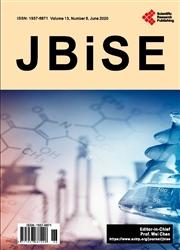Purification of Full-Length β-Secretase Involved in Alzheimer’s Disease, and Proteomic Identification of Binding Partners
引用次数: 0
Abstract
β-Secretase (BACE1 or β-site APP cleaving enzyme) is an acid protease that releases the neurotoxic 40 - 42 residue peptides (β-amyloid or A-β) from its glycoprotein precursor, (APP or amyloid precursor protein) which when released in brain is thought to give rise to cognitive decline in patients with Alzheimer’s Disease. Most structural studies on β-secretase have previously been performed with recombinant forms of the protease, in which the transmembrane coding region has been deleted. However, interactions with proteins of the same species are best studied using the full-length β-secretase as interactions are likely to be influenced by the hydrophobic nature and localization of its transmembrane regions. Here we develop a multi-step purification procedure that isolates a complex containing BACE1 from recombinant human cells using mild detergents in a procedure that retains other proteins within the complex and remains active in its β-site APP cleaving activity. Some of these proteins, eg reticulon 4, are identified by proteomics, and are known by previous studies performed by others to regulate the activity of BACE1 against APP. These interactions may aid the development of small proteins and peptides that could inhibit the release of aggregated forms of β-amyloid, and thus be useful therapeutically.阿尔茨海默病相关β-分泌酶全长的纯化及结合伙伴的蛋白质组学鉴定
β-分泌酶(BACE1或β位点APP切割酶)是一种酸性蛋白酶,可从其糖蛋白前体(APP或淀粉样蛋白前体)中释放神经毒性40 - 42残基肽(β-淀粉样蛋白或A-β),当其在大脑中释放时,被认为会引起阿尔茨海默病患者的认知能力下降。大多数关于β-分泌酶的结构研究以前都是用蛋白酶的重组形式进行的,其中跨膜编码区已被删除。然而,与同一物种的蛋白质的相互作用最好使用全长β分泌酶进行研究,因为相互作用可能受到其跨膜区域的疏水性和定位的影响。在这里,我们开发了一种多步骤的纯化程序,使用温和的洗涤剂从重组人细胞中分离出含有BACE1的复合体,该程序保留了复合体内的其他蛋白质,并保持其β位点APP切割活性。其中一些蛋白质,如reticulon 4,已经被蛋白质组学鉴定出来,并且在之前的研究中被其他人发现可以调节BACE1对抗APP的活性。这些相互作用可能有助于小蛋白和肽的发育,这些小蛋白和肽可以抑制β-淀粉样蛋白聚集形式的释放,因此在治疗上是有用的。
本文章由计算机程序翻译,如有差异,请以英文原文为准。
求助全文
约1分钟内获得全文
求助全文

 求助内容:
求助内容: 应助结果提醒方式:
应助结果提醒方式:


